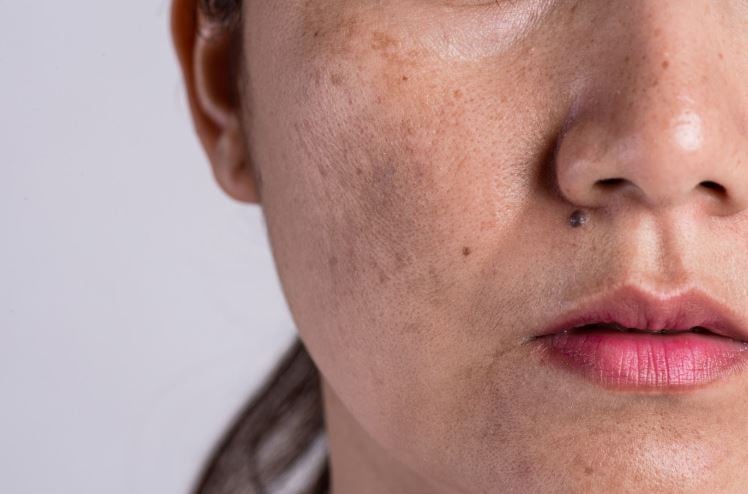Laser treatments for skin rejuvenation represent a significant advancement in dermatological care. These treatments utilize concentrated beams of light to precisely target and treat various skin issues, including scars and fine lines. The underlying principle is the use of light energy, which, when absorbed by the skin, converts into heat energy. This heat effectively removes or damages targeted skin cells, paving the way for new cell growth.

Importantly, these treatments stimulate collagen production, a vital protein that gives skin its firmness and elasticity. Enhanced collagen production leads to smoother, healthier skin, significantly reducing the appearance of scars and fine lines.
Laser treatments have gained immense popularity in skincare due to their efficacy and precision. They offer a non-invasive solution to several skin concerns, ranging from texture irregularities to signs of aging. These treatments can be tailored to address specific skin conditions by adjusting the laser’s intensity, wavelength, and duration.
This customization allows dermatologists to treat various skin types and conditions effectively while minimizing potential risks.
Understanding Different Types of Laser Treatments
Ablative Lasers
Ablative lasers are a type of laser treatment known for their intensity and precision. They work by vaporizing the outer layers of damaged skin, prompting the body to produce new, healthy skin cells. These lasers are particularly effective for more pronounced skin issues, such as deep wrinkles, significant sun damage, and severe scarring.
Non-Ablative Lasers
In contrast to ablative lasers, non-ablative lasers are known for their gentler approach. These lasers work by heating the underlying skin tissue without damaging the surface layer. This process stimulates collagen production and encourages the growth of new, healthy skin cells, improving skin texture and tone.
Non-ablative lasers are often used for less severe skin issues, such as mild to moderate wrinkles, minor scarring, and general skin rejuvenation.
Choosing Between Ablative and Non-Ablative Lasers
Deciding between ablative and non-ablative laser treatments depends on several factors, including the patient’s skin type, the severity of skin issues, and the desired outcome.
While ablative lasers offer more dramatic results, they also come with longer recovery times and a higher risk of side effects.
Non-ablative lasers, though gentler and with quicker recovery, might require multiple sessions to achieve the desired results.
Effectiveness of Laser Treatments in Scar Reduction
Acne scars, often a source of self-consciousness for many, can be effectively treated using laser therapy. Laser treatments for acne scars work by removing the top layer of skin and stimulating collagen production in the underlying layers.
This process helps in reducing the depth of scars and improving skin texture. Different types of lasers, such as fractional CO2 lasers, are particularly effective for this purpose.
Laser treatments are not limited to acne scars; they are also highly effective in treating surgical and injury-related scars. These scars can be reduced significantly in appearance through laser resurfacing, which smoothens the skin and promotes uniform skin texture and tone.
The versatility of laser treatments extends to a wide range of scar types, including keloid, hypertrophic, and atrophic scars. Each type requires a specific approach, and lasers can be adjusted in intensity and wavelength to cater to these varied needs.
Laser Treatments and Reduction of Fine Lines
Lasers are a powerful tool in combating signs of aging, particularly fine lines and wrinkles. They work by removing the outer layer of skin and stimulating the production of new collagen fibers in the deeper layers. This new collagen helps in filling in fine lines and improving skin elasticity, leading to a more youthful appearance.
While laser treatments are highly effective in reducing fine lines, they are not the only option available. This part of the post will compare laser treatments with other anti-aging methods such as chemical peels, microdermabrasion, and topical treatments. It will discuss the pros and cons of each method, their suitability for different skin types, and the circumstances in which one might be preferred over the others.
The long-term effects of laser treatments on fine lines are a crucial consideration for anyone contemplating this procedure.
The Laser Treatment Procedure
The preparation phase is crucial for ensuring the success and safety of laser treatments. The importance of understanding the procedure, setting realistic expectations, and following pre-treatment instructions provided by the skincare professional will be emphasized to ensure optimal results and minimize risks.
Understanding what happens during a laser treatment can alleviate apprehensions and help patients prepare mentally and physically. Post-treatment care is vital for healing and maximizing the benefits of laser treatments.
Risks, Side Effects, and Comparisons
While laser treatments are generally safe when performed by qualified professionals, they do carry potential risks and side effects. One possible adverse effect can be redness, swelling, blistering, changes in skin pigmentation, and, in rare cases, scarring.
If side effects occur, knowing how to manage them is crucial for a swift and comfortable recovery. It is important to emphasize the importance of continuous communication with the dermatologist during the recovery phase.
Laser treatments are one of many options available for addressing scars and fine lines. This section will compare laser therapy with alternative methods such as fillers, Botox, chemical peels, and microdermabrasion. The comparison will focus on effectiveness, suitability for different skin types, recovery time, cost, and duration of results.
Making an Informed Decision
Laser treatments for scars and fine lines offer a modern solution for those seeking skin rejuvenation.
The final takeaway of this blog post emphasizes the critical role of professional consultation. Selecting a qualified and experienced dermatologist or skincare professional is paramount for safe and effective laser treatment.
Interesting Related Article: “Harnessing the Power of Aesthetic Lasers for Transformative Beauty Enhancements“

